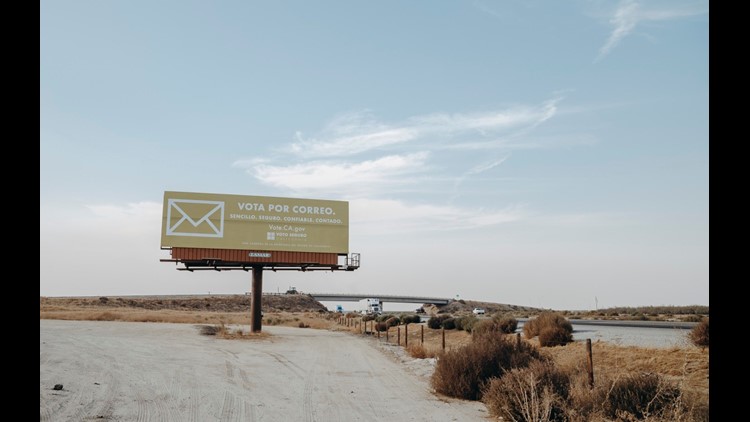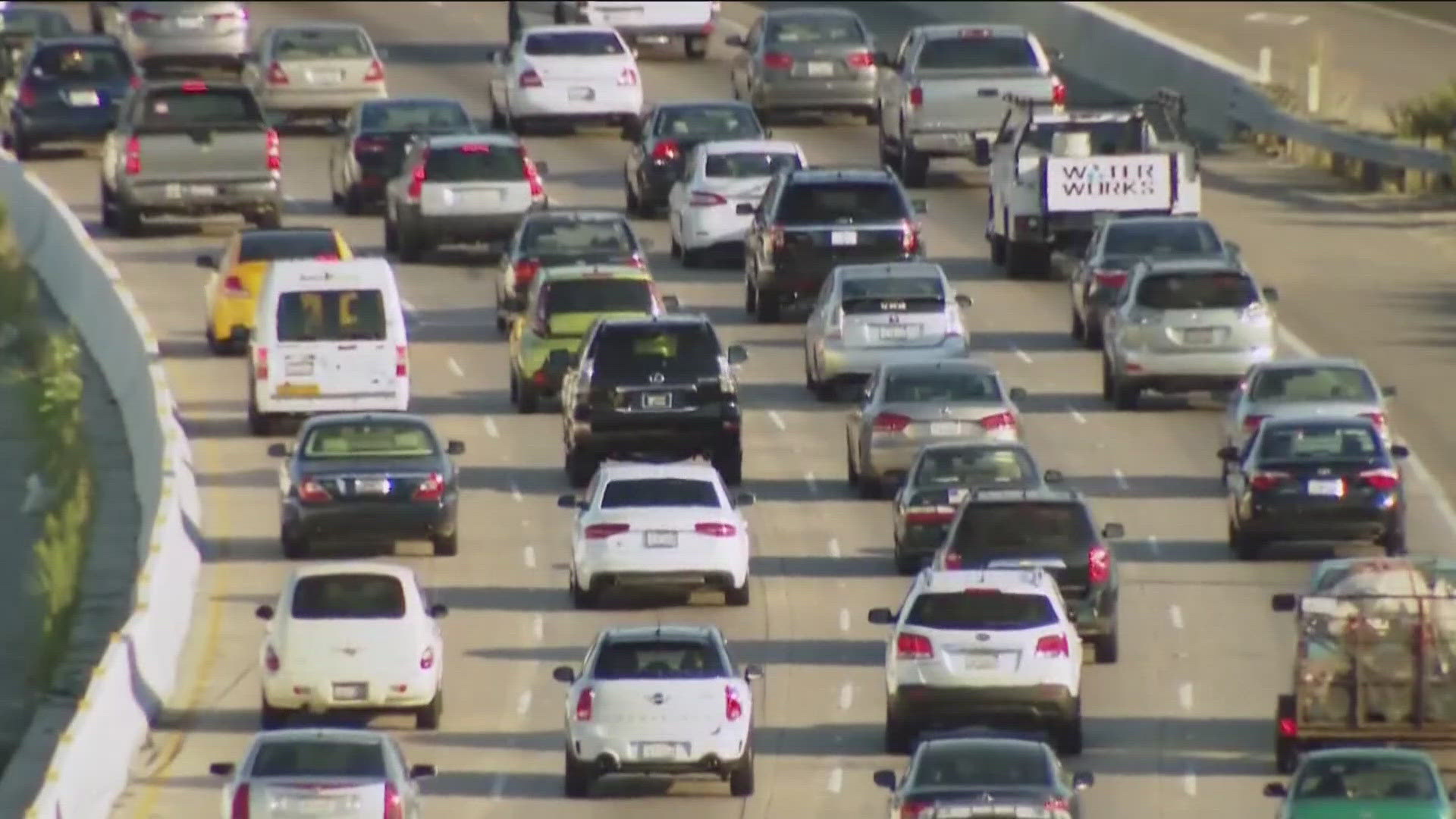Pet videos populate Facebook all the time, but one posted during this frenzied election season stood out: A service dog named Maggie Magoo had voted by mail in Santa Cruz, its owner said. Not just that, the owner claimed Maggie was registered to vote using her microchip number as a social security number.
The story, like so much misinformation, had more bark than bite. But it was only after the video had been viewed at least 25,000 times and Gail Pellerin, Santa Cruz County Registrar, had checked voter registration and called the county’s district attorney, the local sheriff’s department, and the Department of Homeland Security that she felt she could definitively quash the rumor. “For the record, a dog did NOT register and vote in our county,” she tweeted.
“It’s really unfortunate when people just sit behind a camera and put out lies and deceit that just isn’t based on facts or anything real,” Pellerin said. “It really just sort of tarnishes the work that everybody is doing.”
Not all misinformation about the election was as easy to disprove, and there was plenty. A survey by CalMatters of 54 of California’s 58 registrars of voters found that misinformation in all forms was rampant during the recent election. Voters were subjected to everything from wrong or misleading claims from the White House to social media posts discrediting the integrity of the voting process. Registrars in both urban and rural counties said they often spent hours each day trying to get the correct information out to anxious voters.
Kimberly Grady, the registrar for Amador County, said her office fielded “numerous calls daily” about “whatever was talked about on social media or the news. It was usually about fraud.”
“The phones were out of control this election,” said Gregory Diaz, registrar for Nevada County, adding that his office dealt with misinformation “all the time. Every day.”
In fact, much of the registrars’ time was spent addressing voters’ confusion over new election rules rather than malicious disinformation. Apart from their choice of candidates and propositions, voters had a lot to think about in this election. Not only was this California’s first year to use vote-by-mail statewide, but in a number of counties voting centers and dropboxes had replaced familiar polling places. “We had a lot of people who were upset and angry” about the move from polling places to mailed ballots, said Donna Johnston, Sutter County’s registrar. “People did not want their choice taken away from them.”
Many voters displaced by wildfires in counties like Santa Cruz needed assistance finding replacement ballots or locating a place to drop their ballot. And BallotTrax, a new system designed to assure mail-in voters that their ballots had been received and recorded, often instilled more confusion than confidence when it failed to provide prompt feedback in some counties.
Still, even issues that would have been relatively straightforward in simpler times were complicated by President Trump’s false claims about a “rigged” election and the integrity of mail-in voting. Much-publicized cost cutting and mail delays by the U.S. Postal Service led voters to worry that they couldn’t count on their ballots being delivered safely or on time. They expressed doubts about the security of drop boxes, or poll workers’ ability to match signatures on mail-in ballots or the threat of illegal electioneering — advocates distributing or wearing campaign propaganda at the voting centers. “Everything prevalent in the national narrative has been questioned locally,” said Janna Haynes, Public Information Officer for Sacramento County.
To combat the flood of confusion and misinformation, the largest counties deployed armies of workers. Between its phone bank and its social media team, “you’re talking about 35, 40, 45 people,” said Neal Kelley, registrar for Orange County, which has more than 1.6 million registered voters. The Orange County website also posted 30-plus “myths” circulating about voting. Some examples: Voters should put a stamp on their prepaid return ballot envelope for faster delivery (actually, this could slow it down); it’s okay to photocopy one’s ballot (it’s not); ballots that don’t check all the boxes will be voided (they won’t).
Anticipating problems, the Secretary of State’s office had set up a dedicated email account, voter hotline and media monitoring tools well ahead of Election Day to help combat concerns about misinformation. State officials led county public information officers through a presentation on crisis communications and best practices, and equipped them with a tool kit for possible scenarios the week prior to the election, said Jenna Dresner, senior public information officer for the Office of Election Cybersecurity. “We always see an influx in misinformation around elections, but this year it was louder than ever.”
For Kammi Foote, the registrar of Inyo County, the problems began during the summer, with messages coming out of the White House undermining the integrity of the postal service. She said she had to routinely deal with voter phone calls about possibly intentional slow downs of the mail and the removal of U.S. mail collection boxes.
“That did not reflect the reality happening behind the scenes,” Foote said about the situation in Inyo County. “We probably had the strongest partnership with the United States Postal Service that I have ever experienced in my 14 years as a registrar.”
In an effort to combat confusion, Inyo’s elections office expanded its social media reach to Facebook, Twitter and Instagram. Foote said she posted at least twice a day during the busiest days of the election to deal with each new conspiracy theory. One day a number of people called her office to ask how she was preventing people from urinating in the ballot drop boxes.
“I had never previously received those kinds of questions and I thought it was odd that multiple people would ask me that same question,” she said.
Normally, the registrar’s office could have reached out to a wide audience by advertising on Facebook. But Facebook had imposed a ban on new political ads in the week before the election, in an effort to combat misinformation, so Foote was limited to posting only on the county’s page. “I went through so many hoops and so many hours and I even got through to real, live Facebook people and we still weren’t ever able to advertise,” she said. (The registrar for Orange County took the precaution of being certified by Facebook as an official source of election information, Kelley said, so his office was able to circumvent the ban.)
In Sonoma County, Registrar Deva Proto found herself dealing with rumors that grew out of photos taken in September of recycled materials from previous elections. “Somebody took pictures of it and started spreading misinformation, saying that they were worried that we were dumping ballots from this election, even though our ballots haven’t been sent out yet,” said Proto. “And so that took quite a bit of time, just responding to phone calls, and then media requests.”
In Tuolumne County, Registrar Deborah Bautista spent time every day scrolling through Facebook groups that were spreading misinformation. One individual, she recalled, posted an obviously false claim that in-person voting had been canceled. She responded that some polling places were closed due to consolidation efforts but that there was still, in fact, in-person voting. “But the good news is that there were a lot of people that said that [the claim] wasn’t true and to contact the [elections] office,” she said.
Bautista said she is lucky, because Tuolumne County is a small area where people tend to know each other. She said she was often tagged on some of the misleading posts and was able to rebut them before they were able to take root.
“The most important thing the voter should know is that, not everything they read on social media is always true and they need to do a little research,” she added. “If it doesn’t sound right, it probably isn’t right.”
Requests for interviews with Facebook went unanswered as of publication time.



